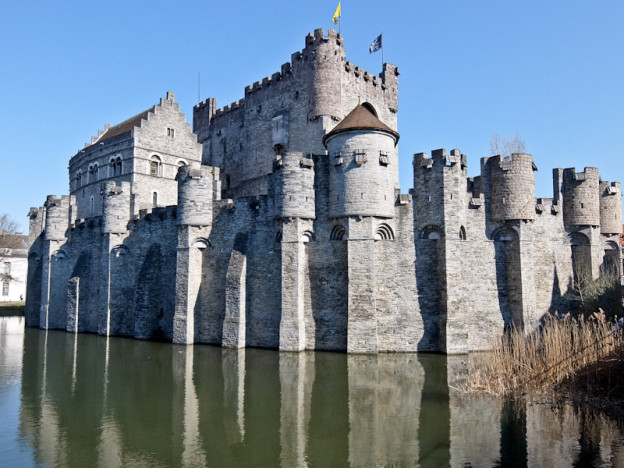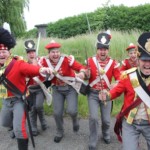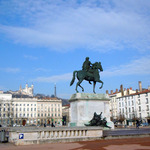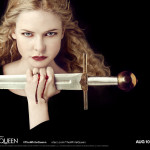Rupert Parker explores three Flanders Cities and discovers Bruges isn’t the only great Flanders city worth a visit.
Flanders, the northern portion of Belgium, has a long trading history and, during the late Middle Ages, it became one of the richest and most urbanized parts of Europe. Weaving the wool of neighbouring lands into cloth for both domestic use and export, the towns attracted artists, nobles, and the great thinkers of the time.
As a consequence, a sophisticated culture developed, with impressive art and architecture, rivalling those of northern Italy. Three Flanders towns grew into Three Flanders cities, some of the wealthiest in Europe at the time. All are easily accessible by train from Brussels, and I spend a pleasant week getting acquainted their different characters.
Ghent
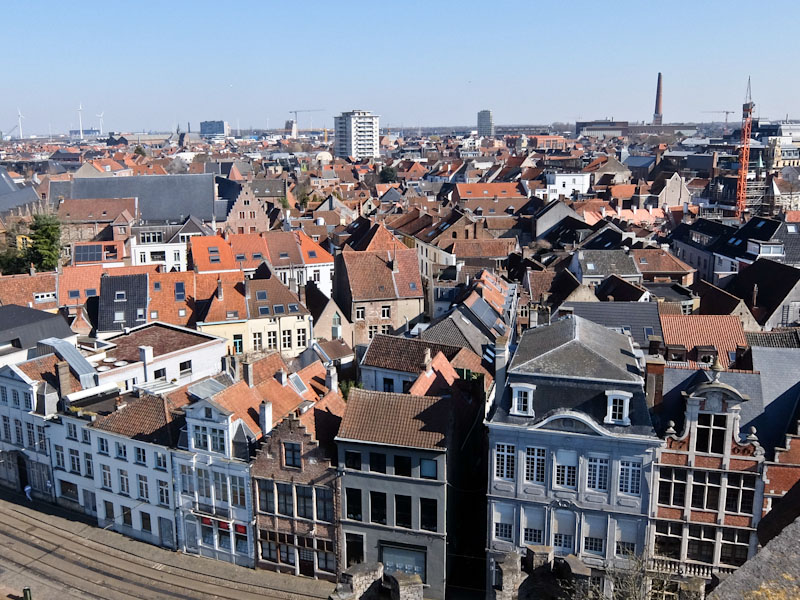
25 minutes from Brussels by train, the first of my three Flanders cities, Ghent is known for Van Eyck’s masterpiece, The Adoration of the Mystic Lamb, recently restored to its original magnificence. It’s kept inside a chapel in St-Baaf’s cathedral and it’s well worth the admission charge.
Outside, I wander round the heart of the medieval city overlooked by church spires and Belfort’s UNESCO listed 14th century belfry. Nearby is the Castle of the Counts, built in the 12th century, its impressive towers enclosed by a moat, there’s not much to see inside but it’s worth climbing to the top for stunning views over the city.
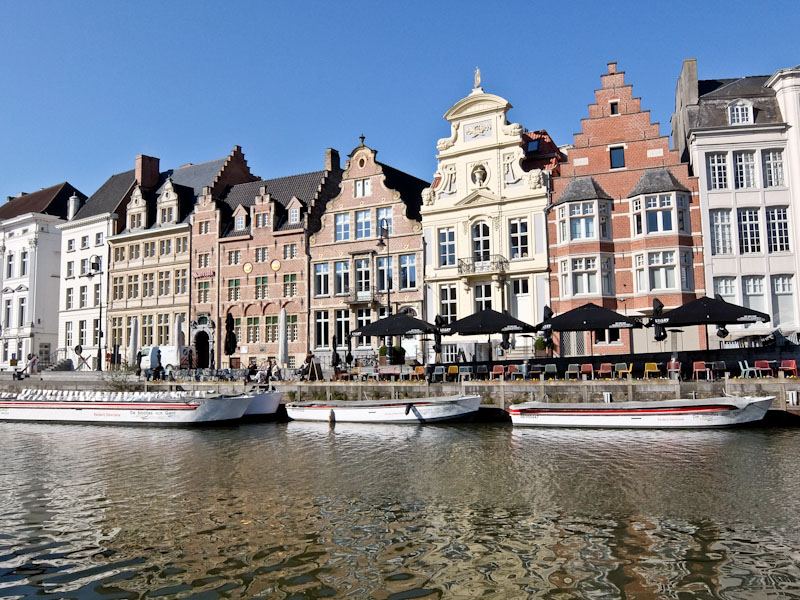
To really get a feel for the city, I take a 40-minute canal cruise, leading me through narrow waterways, lined with antique red brick houses. STAM, Ghent City Museum, details the history of the city using paintings, scale models and drawings and it’s nicely laid out in a former convent.
In the 19th century, Ghent started Flanders’s industrial revolution, and the Museum of Industry and Textile, complete with working weaving machines, shows how the city became the Manchester of the continent.
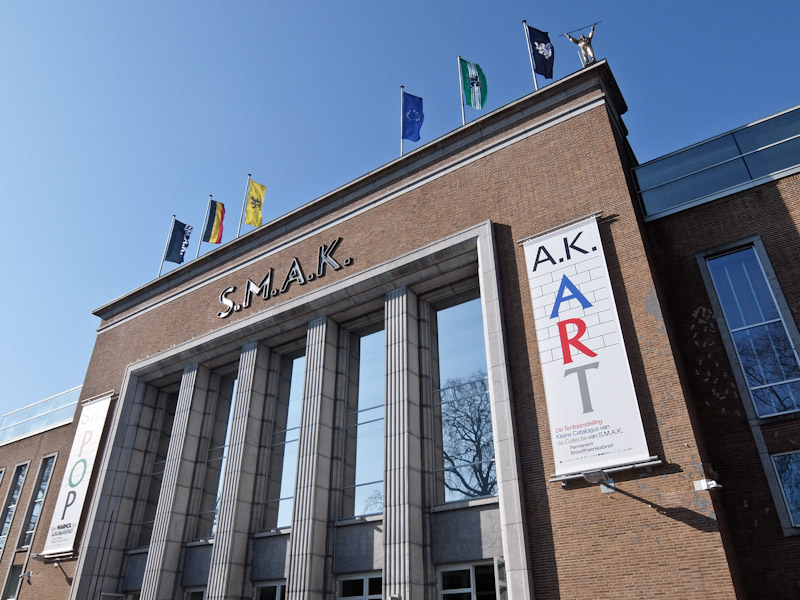
It’s not all history, and S.M.A.K, the Museum of Contemporary Art, has cutting edge temporary exhibitions. Their permanent collection has a nice selection of pop art including works by Andy Warhol and Roy Lichenstein.
Mechelen
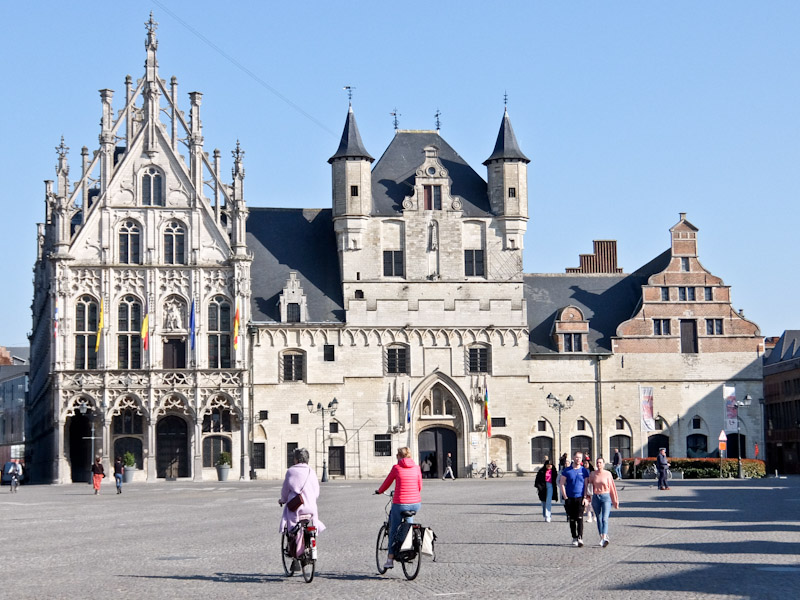
Midway between Antwerp and Brussels, Mechelen is one of Flanders’s most underrated cities. It was the capital until 1530, when it was replaced by Brussels, but it still has an impressive cathedral and a huge central square, lined with imposing buildings. Like Ghent, it has a network of canals, lined with baroque houses.
St-Rombout’s Cathedral dominates the city with its 15th century tower, and I climb its 500 steps for the remarkable view. Opposite, across the square is the Stadhuis, a curious mix of the old and the new. The Cloth Hall is from the 14th century and the neo-gothic council hall was built in 1911 to a 16th century design.
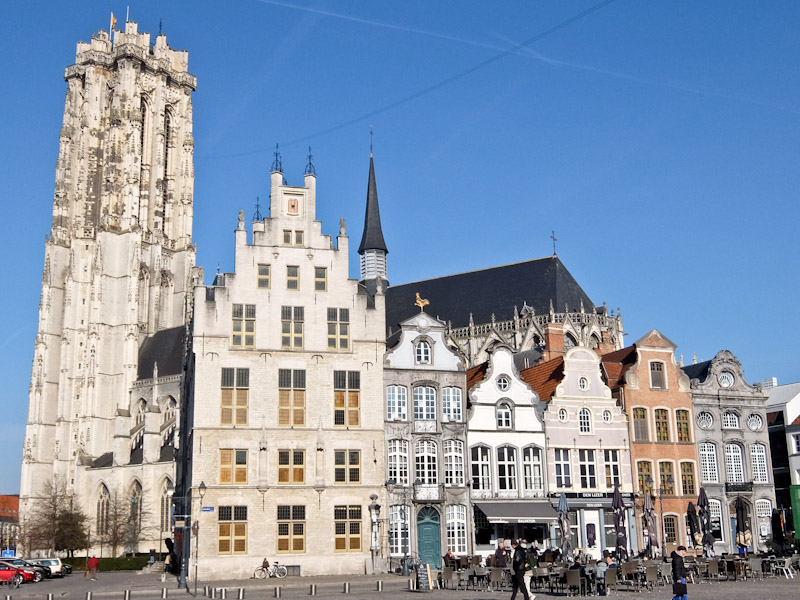
Because of its railway links, the city became a Nazi deportation centre during WW2 and over 25,000 Jews were sent to Auschwitz. Their temporary home was the 18th century Dossin Barracks and a new Museum, the Kazerne Dossin, has been built opposite. This tells the chilling story of Nazi Occupation, collaboration, resistance and finally death, through artefacts and photographs.
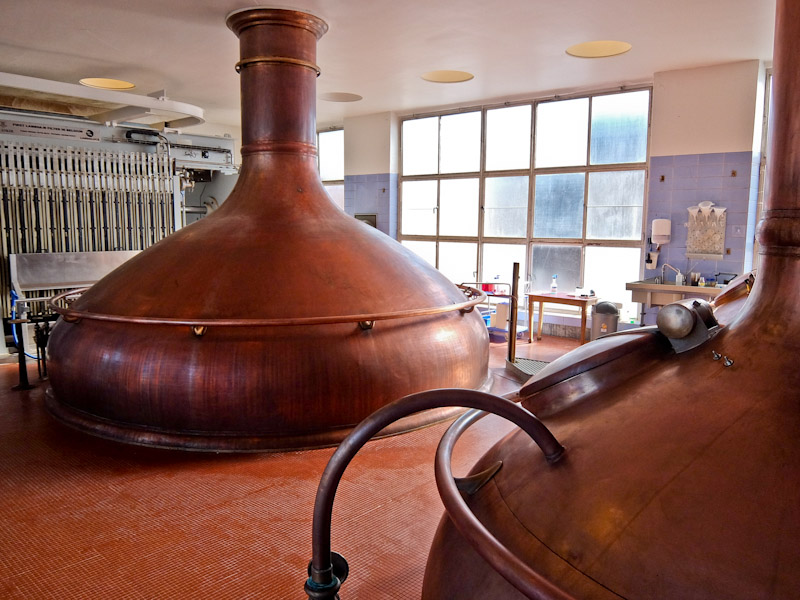
Beer was brewed in this city by Beguines, women halfway to becoming nuns, and the Het Anker Brewery carries on this tradition. I take a guided tour which ends with a tasting of their finest beers. Highly recommended is Gouden Carolus ‘Classic’, a rich 7.5% dark beer but don’t miss the sturdy 9% Tripel and the 8% Ambrio brown ale.
Antwerp
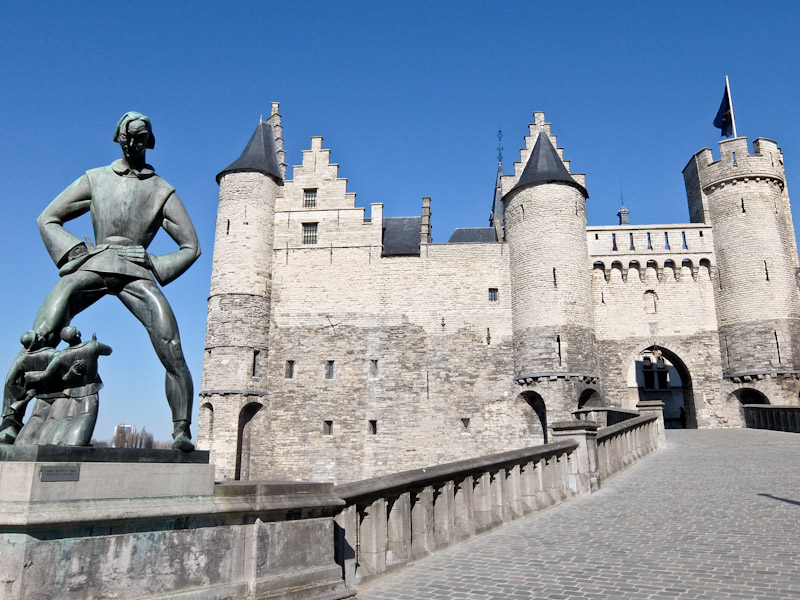
Antwerp is Belgium’s 2nd city, famous as the home of painter Pieter Paul Rubens, but there’s far more to it than that. At its heart is the medieval centre with winding cobbled lanes and an impressive cathedral but there’s also the waterfront dominated by the small Het Steen castle. In the 16th century Antwerp grew to become the richest city in Europe.
A three-hour cycle tour is a good way of exploring the outlying districts roughly following the line of the original walls and moat, now filled in. The south has grand 19th century mansions and the huge Neoclassical Koninklijk Museum voor Schone Kunsten (KMSKA; Royal Fine Art Museum) dating from the 1880s.
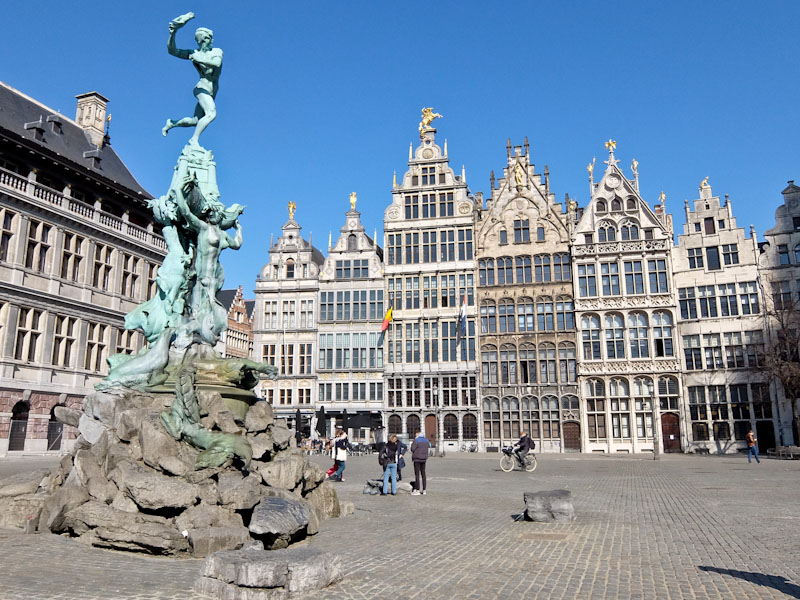
In the north, the dock area, built by Napoleon, is where Red Star Liners, full of prospective immigrants, left for the USA between 1873 to 1934. There’s an excellent museum and the warehouses have now been converted to bars, restaurants, and apartments. A curious hangover from navy days is Antwerp’s remaining red light district, only one street with girls displaying in the windows.
You can’t miss the modern cubist building that houses MAS, the Museum Aan de Stroom. On ten floors, various displays deal with big ideas, including “Life and Death” to “Displays of Power”. There are also temporary exhibitions and it’s easy to spend an entire day here.
Of course, Rubens is everywhere, and I visit the Rubenshuis where he lived and see fourteen of his paintings on display. His tomb is in the St-Jacobskerk where his famous Our Lady Surrounded by Saints includes likenesses of himself, his wives, and his father. The Cathedral has four early paintings and the Rockoxhuis has another couple.
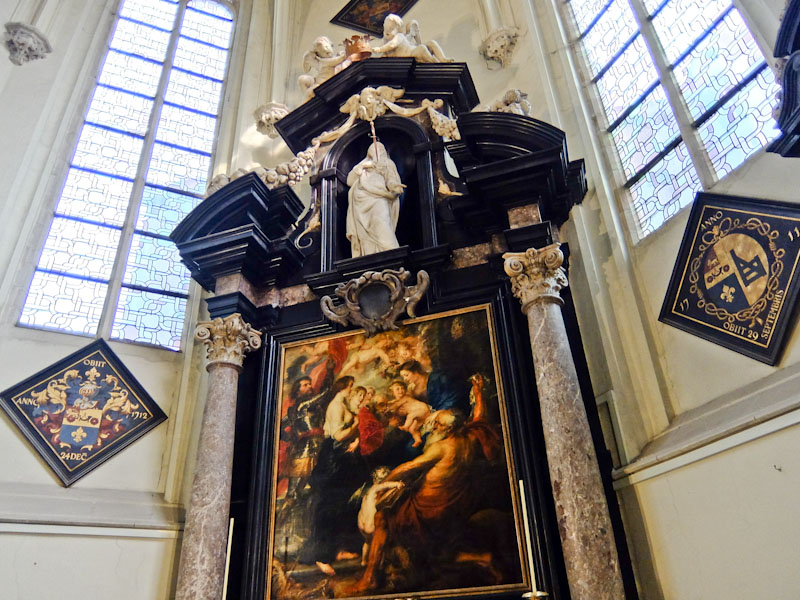
Finally, on my visit to Three Flanders Cities I visit the remarkable Plantin-Moretus Museum, now a UNESCO World heritage site. This was the mansion of printer Christopher Plantin who started the first industrial print works. The rooms are arranged around a central courtyard and highlights include a seventeenth-century bookshop and the world’s first printing press.
Of course, with these Three Flanders cities I’ve only scratched the surface and I’m still missing a couple, Leuven, and Ypres, as well as Bruges, but those are for my next visit.
Tell Me More About Visiting Three Flanders Cities
Visit Flanders has information about the region and my three Flanders cities
Visit Gent has information about the city.
Visit Mechelen has information about the city.
Visit Antwerp has information about the city.
Eurostar has direct trains from London to Brussels with free connections to any Belgium station.
Ghent
Yalo Hotel is a stylish boutique hotel in the medieval centre with an excellent restaurant.
Boon serves tasty vegetarian lunches
Dok Brewing Company has great beer and barbecue.
The Ghent City Card allows access to museums and galleries and free tram travel.
Mechelen
B&B Porta Superia has luxury rooms in an Art Deco Mansion.
Cosma Foodhouse serves innovative food with a Mediterranean twist.
De Vleeshalle is a new food market where you try dishes from different stalls.
Brewery Het Anker does two hour brewery tours with tastings.
The Sense-sations pass offers tastings of local specialities, from beer-based cheese to artisan sweets, for €6.
Antwerp
Hotel Franq has high quatlity accomodation on the edge of the medieval quarter.
The Antwerp City Card allows access to museums and galleries plus free public transport.
Invincible offers stylish food with excellent steaks and fish.
Restaurant Nage serves tasty dishes.in a bistro environment
Local Store delivers an assortment of snacks and salads and has an outdoor terrace.

